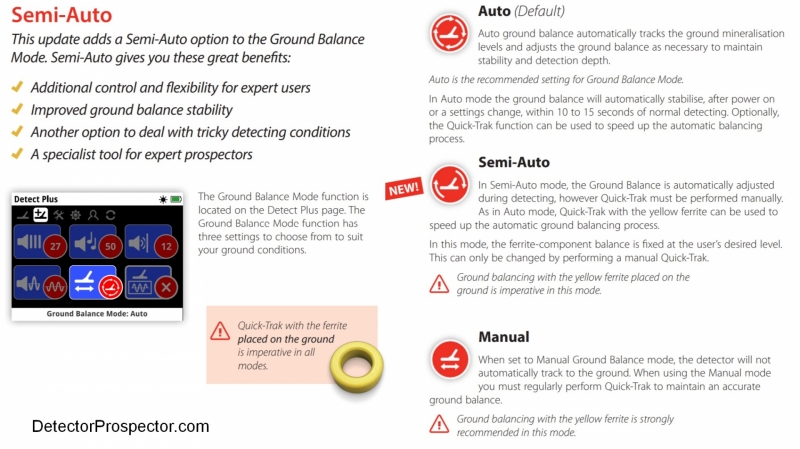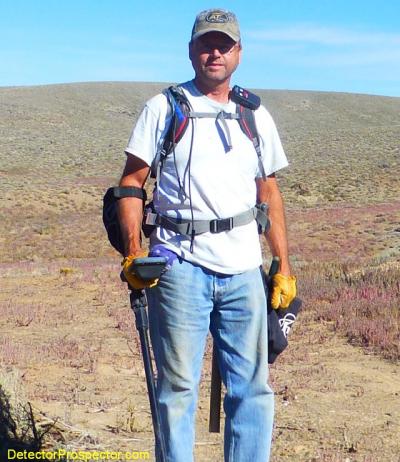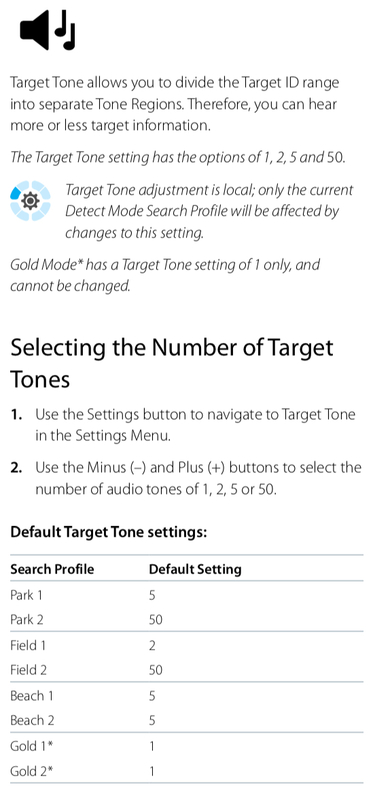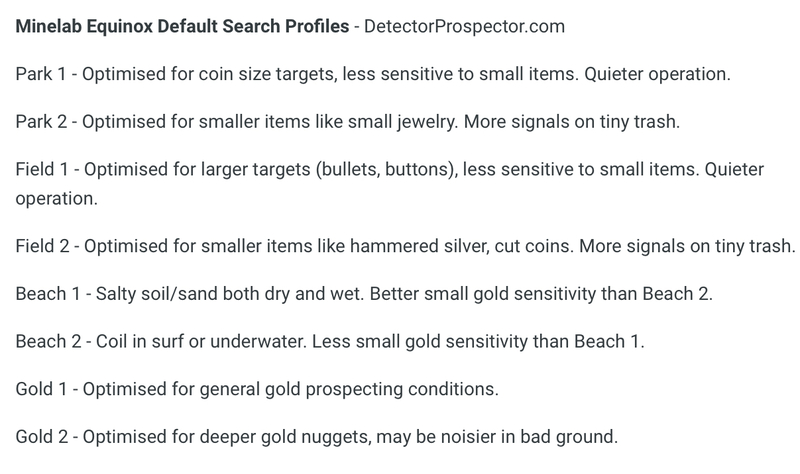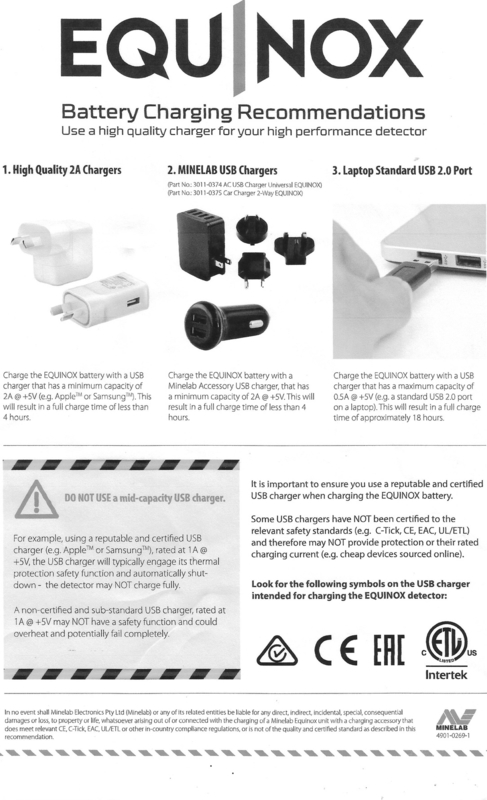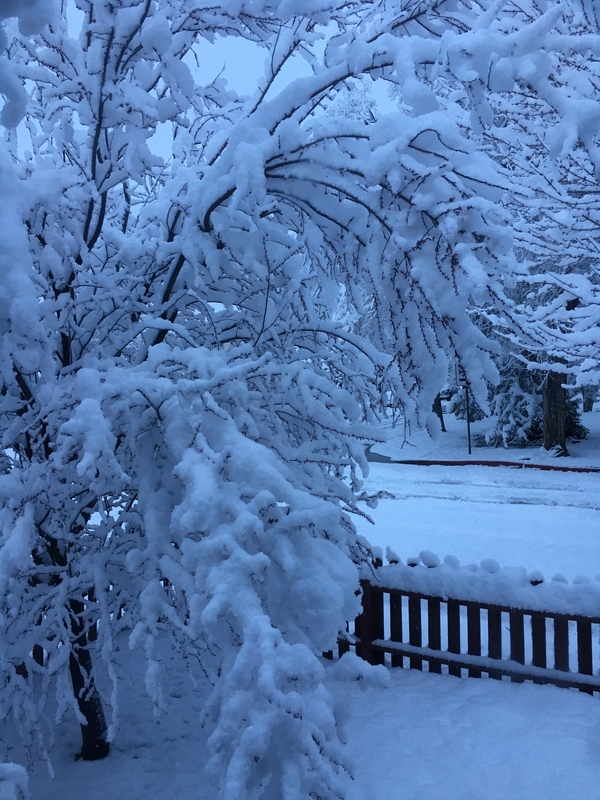-
Posts
19,765 -
Joined
Content Type
Forums
Detector Prospector Home
Detector Database
Downloads
Everything posted by Steve Herschbach
-

Audio Booster For The Wm-12?
Steve Herschbach replied to Rail Dawg's topic in Minelab Metal Detectors
I use the WM12 by itself. If you want to try a booster here is a previous thread on the subject... -
War Production Board Limitation Order L-208, 7 Fed. Reg. 7992-7993, provided as follows: "The fulfillment of requirements for the defense of the United States has created a shortage in the supply of critical materials for defense, for private account and for export which are used in the maintenance and operation of gold mines; and the following order is deemed necessary and appropriate in the public interest and to promote the national defense. " 3093.1 Limitation Order L-208 - (a) Definitions. For the purposes of this order, `nonessential mine' means any mining enterprise in which gold is produced, whether lode or placer, located in the United States, its territories or possessions, unless the operator of such mining enterprise is the holder of a serial number for such enterprise which has been issued under Preference Rating Order P-56. "(b) Restrictions upon production. (1) On and after the issuance date of this order, each operator of a nonessential mine shall immediately take all such steps as may be necessary to close down, and shall close down, in the shortest possible time, the operations of such mine. "(2) In no event on or after 7 days from the issuance date of this order shall any operator of a nonessential mine acquire, consume, or use any material, facility, or equipment to break any new ore or to proceed with any development work or any new operations in or about such mine. "(3) In no event on or after 60 days from the issuance date of this order shall any operator of a nonessential mine acquire, consume, or use any material, facility, or equipment to remove any ore or waste from such mine, either above or below ground, or to conduct any other operations in or about such mine, except to the minimum amount necessary to maintain its buildings, machinery, and equipment in repair, and its access and development workings safe and accessible. "(4) The provisions of this order shall not apply to any lode mine [357 U.S. 155, 159] which produced 1200 tons or less of commercial ore in the year 1941, provided the rate of production of such mine, after the issuance date of this order, shall not exceed 100 tons per month, nor to any placer mine which treated less than 1000 cubic yards of material in the year 1941, provided that the rate of treatment of such placer mine, after the issuance date of this order, shall not exceed 100 cubic yards per month. "(5) Nothing contained in this order shall limit or prohibit the use or operation of the mill, machine shop, or other facilities of a nonessential mine in the manufacture of articles to be delivered pursuant to orders bearing a preference rating of A-1-k or higher, or in milling ores for the holder of a serial number under Preference Rating Order P-56. "(c) Restrictions on application of preference ratings. No person shall apply any preference rating, whether heretofore or hereafter assigned, to acquire any material or equipment for consumption or use in the operation, maintenance, or repair of a nonessential mine, except with the express permission of the Director General for Operations issued after application made to the Mining Branch, War Production Board. "(d) Assignment of preference ratings. The Director General for Operations, upon receiving an application in accordance with paragraph (c) above, may assign such preference ratings as may be required to obtain the minimum amount of material necessary to maintain such nonessential mine on the basis set forth in paragraph (b) (3) above. "(e) Records. All persons affected by this order shall keep and preserve, for not less than two years, accurate and complete records concerning inventory, acquisition, consumption, and use of materials, and production of ore. "(f) Reports. All persons affected by this order shall execute and file with the War Production Board such reports and questionnaires as said Board shall from time to time prescribe. "(g) Audit and inspection. All records required to be kept by [357 U.S. 155, 160] this order shall, upon request, be submitted to audit and inspection by duly authorized representatives of the War Production Board. "(h) Communications. All reports to be filed, appeals, and other communications concerning this order should be addressed to: War Production Board, Mining Branch, Washington, D.C., Ref.: L-208. "(i) Violations. Any person who wilfully violates any provision of this order, or who, in connection with this order, wilfully conceals a material fact or furnishes false information to any department or agency of the United States, is guilty of a crime, and upon conviction may be punished by fine or imprisonment. In addition, any such person may be prohibited from making or obtaining further deliveries of, or from processing or using, material under priority control and may be deprived of priorities assistance. "(j) Appeal. Any person affected by this order who considers that compliance therewith would work an exceptional and unreasonable hardship upon him may appeal to the War Production Board, by letter, in triplicate, setting forth the pertinent facts and the reason he considers he is entitled to relief. The Director General for Operations may thereupon take such action as he deems appropriate. "(k) Applicability of priorities regulations. This order and all transactions affected thereby are subject to all applicable provisions of the priorities regulations of the War Production Board, as amended from time to time. "(P. D. Reg. 1, as amended, 6 F. R. 6680; W. P. B. Reg. 1, 7 F. R. 561; E. O. 9024, 7 F. R. 329; E. O. 9040, 7 F. R. 527; E. O. 9125, 7 F. R. 2719; sec. 2 (a), Pub. Law 671, 76th Cong., as amended by Pub. Laws 89 and 507, 77th Cong.) "Issued this 8th day of October 1942. "ERNEST KANZLER, "Director General for Operations."
-

New 61 Khz Makro Gold Kruzer
Steve Herschbach replied to Steve Herschbach's topic in Nokta / Makro Metal Detectors
Or May. Whatever... detectors appear when they appear and not a moment sooner. Thank for the update! -

Question On GPZ Firmware Update
Steve Herschbach replied to inthemountains's topic in Minelab Metal Detectors
If you want the GPZ mapping interface to XChange2 to continue working, do not update. If you want features offered by the latest update, then go ahead update. It’s one or the other. Minelab GPZ 7000 Firmware Update 2 -
-
-

How To Change 50 Tone To 5 Tone???
Steve Herschbach replied to martygene's topic in Minelab Equinox Forum
Target Tone allows you to divide the Target ID range into separate Tone Regions. Therefore, you can hear more or less target information. The Target Tone setting has the options of 1, 2, 5 and 50. Target Tone adjustment is local; only the current Detect Mode Search Profile will be affected by changes to this setting. Gold Mode (Equinox 800 only) has a Target Tone setting of 1 only, and cannot be changed. Selecting the Number of Target Tones 1. Use the Settings button to navigate to Target Tone in the Settings Menu. 2. Use the Minus (–) and Plus (+) buttons to select the number of audio tones of 1, 2, 5 or 50. -
Most target id charts are constructed with Park 1 default settings. Be aware that while Minelab has done their best to "normalize" target ids across all Search Profiles and settings the fact is they can vary. Usually by only a single digit, but perhaps more. Ferrous can show large shifts when toggling to 5 kHz mode, which can help with identifying bottle caps, for instance. Examples This is not a problem for people who generally recover all non-ferrous (U.K. hunters, jewelry hunters) but for people intent on "cherry picking" certain coins, like U.S. nickels, you need to be aware of this. In the link above for instance the classic 13 reading on most nickels is more like 12 in some other profiles. In general Park 1 and Field 1 will have the most stable target id on coin size targets. Also, be aware that Equinox is very sensitive to surface changes in targets, and so corroded pennies, for example, will vary from cleaner examples. Here is my classic U.S. coin chart for Park 1 followed by an enhanced version of the Equinox Manual ID Chart from the Instruction Manual, page 31. The location of the modern U.S. dollar (Sacawagea, Susan Anthony) has been noted on the Minelab chart and older silver dollars added, since this was causing confusion. The modern dollar reads near to quarters. I also added medium and small rings to the chart, since their exclusion had people thinking all rings read high. People are reading way too much into what is missing from these simple guides, or even simple general statements in the manual. Just because they left out small and medium rings does not mean all rings read like pennies! Anyway, I hope this helps clarify things a little. Click for larger versions...
-

Iron Bias And Recovery Speed
Steve Herschbach replied to broadsmaster's topic in Minelab Equinox Forum
Few people really know what they are doing yet so settings taken off the internet have more chance of being “wrong” than “right”. -

Further Thoughts On The Equinox
Steve Herschbach replied to Mtwolf2270's topic in Minelab Equinox Forum
I always ground balance in my ground. The “no ground balance thing” is for mild to moderate ground conditions only. Common park and beach situations. -

Venturing Into The Dark Side....
Steve Herschbach replied to SteelPhase's topic in Minelab Equinox Forum
I highly recommend using the suggested default Search Profiles, with the sensitivity maybe bumped up a point or two if conditions allow. Park 1 - Optimised for coin size targets, less sensitive to small items. Quieter operation. Park 2 - Optimised for smaller items like small jewelry. More signals on tiny trash. Field 1 - Optimised for larger targets (bullets, buttons), less sensitive to small items. Quieter operation. Field 2 - Optimised for smaller items like hammered silver, cut coins. More signals on tiny trash. Beach 1 - Salty soil/sand both dry and wet. Better small gold sensitivity than Beach 2. Beach 2 - Coil in surf or underwater. Less small gold sensitivity than Beach 1. Gold 1 - Optimised for general gold prospecting conditions. Gold 2 - Optimised for deeper gold nuggets, may be noisier in bad ground. -
Welcome to the forum. This and most any other question you have can be answered by checking out previous threads. Just use the specs below if you want to be sure a charger is approved for use. Others may or may not work fine.
-

A Slight Delay Before I Go Detecting
Steve Herschbach replied to Steve Herschbach's topic in Detector Prospector Forum
No I am a fair weather detectorist these days. In Alaska I had to hunt no matter how bad it was due to short season. Here, there are so many nice days I am not out unless it’s halfway decent. Like 50 or better. I am so busy with other stuff I need winter downtime anyway. -
-

Kobi-mcgrath Trail In Alaska
Steve Herschbach replied to Alaskagold's topic in Detector Prospector Forum
Welcome to the forum! I would attend the next monthly meeting of the Alaska Miners Association in Fairbanks (assuming you are there) and pipe up during the meeting and ask. If anyone is around that knows anything it would probably be somebody at the AMA. -

Underwater 600 Without Headphones
Steve Herschbach replied to Voyager32's topic in Minelab Equinox Forum
Welcome to the forum! You won't hurt the detector submerging it as long as the plug is installed in the earphone port. However, unless you are in very still water I am doubtful about the ability to hear the detector very well underwater. Any sound from surf at all would drown out the detector. Still, it is all speculation until somebody gives it a go. If the water was warmer around here I would try it myself but its not going to happen right now! -
I think you will find like most people that once you get an Equinox this is kind of a non-issue. Mostly just something for people to discuss while waiting for a detector. I keep all the bullets I find detecting and made up a 1 lb sack and tied under the armrest. It makes for a better balance but... well, it adds a pound! I don't intend on fiddling with it anymore beyond that brief experiment. Now, when I ever get a 15" coil that will probably be another matter, as I would expect the balance them to fall outside my comfort zone. Until then however I have no complaint with Equinox as is. In fact the slight nose heavy setup makes it very comfortable for me using the detector without an arm strap since the cup stays firmly against my forearm. In parks Iet the coil ride on the grass and as much pushing down as holding up. Long story short you might want to give it a spin before doing anything.
-
Thnks Daniel, great report and a mirror of my findings. I have been repeating over and over that reducing recovery speed in high mineral ground will lose depth, not gain it, but skeptics abound. Further, in any situation where good targets reside next to bad targets lower recovery speeds induce masking. Lightning fast speed is one of Equinox major advantages and many people are tossing it away without a thought. I am not saying lower recovery speeds do not apply in some situations, but most places have been pounded for years by slower machines so why go there? Even where people think trash is sparse that trash still hides targets. In my opinion high mineral ground acts like ground made up of just another type of dense ferrous targets, with weaker and stronger areas. Faster recovery speeds act to reduce "ground masking" letting Equinox peek into small areas of weaker mineralization or between hot rocks that mask targets from other machines. Another way to look at recovery speed is as a type of ground filter. Recovery speed on the Equinox is roughly analogous to V/SAT on White's prospecting detectors. There is no denying that ground noise (ground masking) increases with lower recovery speeds in mineralized ground. I also have seen my best deepest targets reveal as a small non-ferrous spot in the middle of a larger ferrous "donut" in bad ground. In fact, if I find a nice round ferrous target (why I hunt with ferrous accepted) I work it extra hard trying to get that nice non-ferrous spot to open up in the middle. 39 is high ferrous wrap but a hit in the mid to higher 20s in the middle of a ferrous donut is usually a deep non-ferrous target. Again, we are talking severe ground conditions. Mentioned here in November and here in December with later mentions. As you note being dead center on target and with proper sweep speed is critical to getting these right. And listen for the overall "roundness" of the combined ferrous/non-ferrous target - oddball ferrous will not exhibit the roundness factor as much if at all.
-
Yikes, scared me there Strick - thought you were leaving the forum! Glad to hear that’s not the case.

